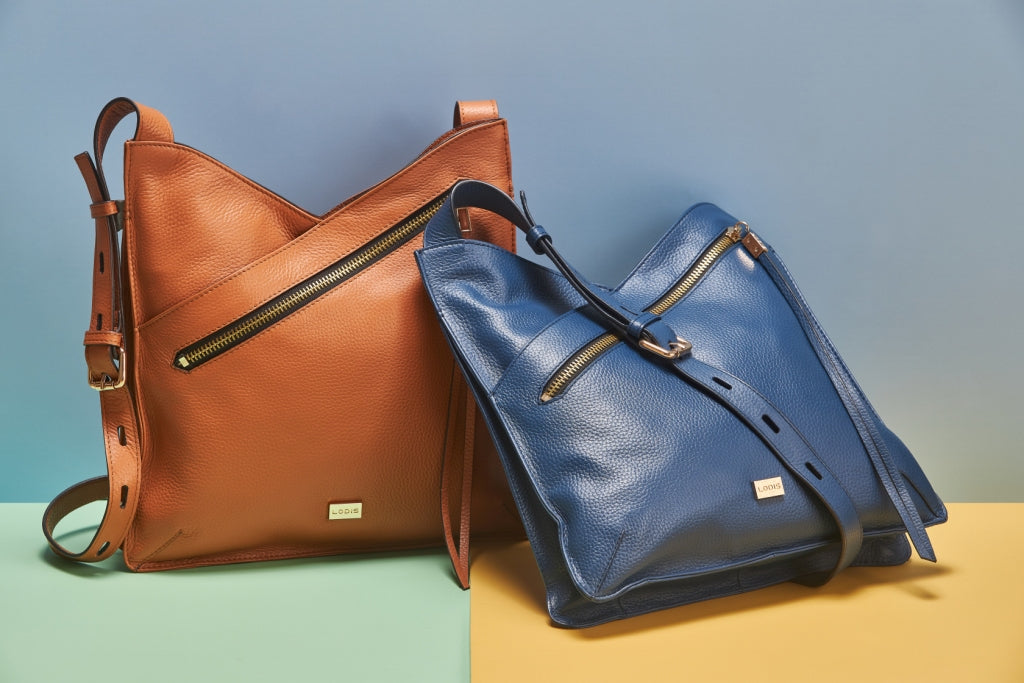
How to clean a Leather Bag: The Complete Guide
Buying a leather bag is a long term investment, and if cared for well - good leather can last a lifetime. But taking care of your leather purse will require you to invest your time as well as your eye for detail. Because stains happen. They are the mark of a life well-lived.
For leather connoisseurs like yourself (and fellow victims to human error), we have curated a complete guide to cleaning your leather bag,
Know your leather
Knowing the leather make of your bag is the first and foremost step. It is important to remember that leather is a form of skin, and the difference in the make of this skin will dictate the cleaning method it requires.
- Unfinished Leather: This type of leather comes without any form of protective layering on it. Within this category as well, full grain leather will be more absorbent, sensitive and expensive to replace. Bags made with unfinished leather (and full-grain leather) are very sensitive to damp and rain, and therefore require the utmost care. While buying leather cleaning agents, look out for those which specifically work for the entire range of leather goods. Try to avoid saddle soap. Patch tests in inconspicuous regions are recommended before using any form of cleaner.
- Finished Leather: This type of leather is the more common form found in store-bought leather goods. It is highly processed during the manufacturing process and hence more durable and strong. Due to the protective covering on the surface (which gives it the attractive sheen), it is not as absorbent. Saddle soap will usually work well to clean leather in this form, but may still be too strong - work mindfully around it.
- Suede: This type of leather will require your gentle hand. Most suede products do not work well with water and soap, and hence for any stains - the alternative of a clean cloth and some rubbing alcohol (or vinegar) should do the trick. For more serious damages, it is best left to the professionals.
- Faux leather: Water and detergent is your best friend (but don't overdo it).
The General Care of a Leather Bag
Making sure that your leather bag is well maintained and cleaned regularly will ensure its long life. For everyday care, use a dry brush to dust off debris and scuff from the surface. Leather creams (readily available in the market or online) or even just a thin layer of petroleum jelly (mind the leather make before using) will keep your handbag supple and keep the leather from drying out.
For dirt or mud, you may clean the bag with a damp cloth. You may reach for some warm water and dish soap (mild) if the mud is caked or dried. However, it is best to note that harsher chemicals are to be avoided. Never use baby wipes.
If your leather purse gets soaked in the rain, do not throw it in the dryer or use a direct hair dryer. This will crack the leather surface and dry it unevenly. Instead, leave it in a dry area and let it dry off naturally. Keep away from direct sunlight to avoid discolouration. Allow the leather to breathe. It may need to dry for a couple of days
How to deal with stains
Stains happen, and when you are a proud owner of a patent luxury handbag - that small ink blot at the side of your bag is enough to stop your heart. Treating stains on leather although best left to professionals, can also be dealt at home or the damage minimised with the following tips.
- Ink stains: Ink stains are best dealt with a cotton swab and a cleaning solution - usually nail polish remover. They key is efficiency and a gentle hand. An alternative to this is a diluted white vinegar solution and a soft cloth. Blot, rest, and dab away the stain.
- Water stains: Immediately after spillage, use a clean cloth or a tissue to dab gently the affected area to absorb as much moisture as you can. Let the bag rest in a dry environment to dry for a couple of hours. Do not apply direct heat in an effort to dry it out quickly, as it will irritate the stain and make it worse.
- Oil stains: One tablespoon of baking powder mixed in a cup of water, and a soft cloth (microfibre cloth preferred). Apply the baking soda solution directly to the stain, and soak out the oil with the cloth. The baking soda assists in soaking out oil
How to remove odours from a leather bag
Some leather bags come with a detachable inner lining. You can take out the inner bag and give it a thorough cleaning to rinse out any form of spillage that might potentially be causing an odour. Cornstarch is helpful in getting rid of muck from pockets and linings (the bag's store for bacteria growth).
Dealing with mold
Real leather is a natural candidate for mold. Humid weather conditions and improper storage provides an ideal environment for mold growth.
The mold may make the leather smell or discolor it. If your handbag has mold on it, don't worry. It's easy to clean and you can keep your bag in great condition. Make sure the bag is completely dry before you start cleaning it. You can do this by leaving it in a warm place for a few hours. To clean the mold, use a wet towel to wipe the surface of the leather. The mold should come off easily if the bag is dry enough.
Once you have cleaned your bag, make sure to dry it off a second time. If you see any deep mold, use a leather cleaning solution. To avoid mold in the future, store your leather handbag in a low-moisture environment and regularly brush off scuff.
What are denim stains and how to deal with them
The dye in denim has a tendency to bleed on to light coloured leathers - with wear and time. This can happen when the bag is worn on a humid day, and comes in frequent contact with denims and/or rubs against it often.
The best way to get out denim stains is to use leather cleaning solutions. However, in the instance that it may not be available, the combination of cream of tartar and lemon juice will also do the job. Dip a cotton swab in the mixture and dab it on the stain, let it soak for a couple minutes and rub it off. Be careful not to be too aggressive with taking out the stain, and please - to not beat the point of doing it all, use a white cloth for light leathers.
The Secret to Storing Leather
One of the best ways to avoid the condition in which you might have to do any or all of the above lies in storing your bag. If kept properly between usages, the leather purse will hold its shape, colour and character for a lifetime. Storing a bag appropriately will make a significant difference, especially if dealing with unfinished leather or suede products.
- One of the primary things to remember when storing leather is - avoid plastic or any sealed off containers at all costs. Leather is hide, and it has to breathe. Dust bags are appropriate for this, and will keep the bag safe.
- Store in a dry, well aired out location as stashing it in a dark, damp corner is a recipe for mold.
- To retain shape, do not hang it on a hook. Place it upright on a shelf or in your closet space with plenty of space to breathe.
- Patent leather needs to be stored individually. If placed touching anything with colour, it will bleed and transfer and may cause irreversible damage.
Although, cleaning your bag at home as a general care or working up a panic for accidents with DIY kits - it is best to occasionally send out your luxury leather handbag for a professional cleaning and conditioning.











